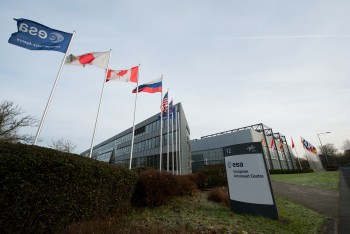With the London Marathon on Sunday we continue to introduce the hard-working teams that support Tim during his time in space. Based at the European Astronaut Centre in Cologne, Germany, a number of people assure that Tim stays healthy. His attempt to run a marathon on the International Space Station’s treadmill means that his fitness prog

EAC. Credits: ESAramme and diet has been adapted to ensure he will return to Earth in full health – and complete the 42 km run. We asked the teams some questions to introduce themselves:
What is your working title?
Flight Surgeon
What do you do?
The flight surgeon provides healthcare for an astronaut from the moment they are assigned a spaceflight, throughout their time in space and until they return to active duty after the mission.
What does your typical day look like?
It depends on the stage of mission. In the pre-flight phase, the flight surgeon oversees the complex medical certification process to clear the astronaut through ESA’s and international space medicine boards to fly in space. Launch and landing are also key for the flight surgeon to provide assistance for. During the mission, the flight surgeon ensures that the astronaut remains healthy and fit for mission duties and returning safely to Earth, with the support of the teams of Biomedical Engineering, Behavioural Health, Exercise and Environmental Health control and in coordination with the International Space Station Integrated Medical Group .
Weekly private medical conferences with periodical medical and environmental checks allow the surgeon and the supporting teams to status the overall well-being and safety of the astronaut and the Station. During the post-flight phase, the flight surgeon, with support of the teams, assesses the health status and recovery progress of the astronauts through an exercise rehabilitation plan to return the astronaut back to full flight status.
How is working for Tim Peake and ESA?
Working with Tim Peake has been very rewarding both from a human and professional standpoint. Tim’s mission has also had several highlights of interest for medical support such as his spacewalk and his participation as subject and operator in the complex Airway Monitoring experiment.
How have you adapted to Tim’s marathon run?
The flight surgeon worked very closely with the exercise specialist and the astronaut in preparing for this activity. During the marathon, the surgeon will sit at the Euoprean Astronaut Centre’s medical console to assist with the run together with the exercise specialist and the biomedical engineers to ensure that all aspects of crew health and safety are properly monitored. Running such a distance in space is a unique experience and requires special care and attention by all involved.
What is the best part of your job?
Seeing astronauts achieving their objective of flying in space, fully enjoying their life in microgravity and returning healthy back home to their families and friends, to prepare for the next flight.
Anything else?
From medical perspective, spacecraft that provide artificial gravity and Earth-like environments should be a priority objective in designing and planning for deep space exploration, to ensure that humans can safely travel in space to distant destinations, preserving the very essence of their nature.


Discussion: one comment
Thanks for sharing this great post! That is very interesting information